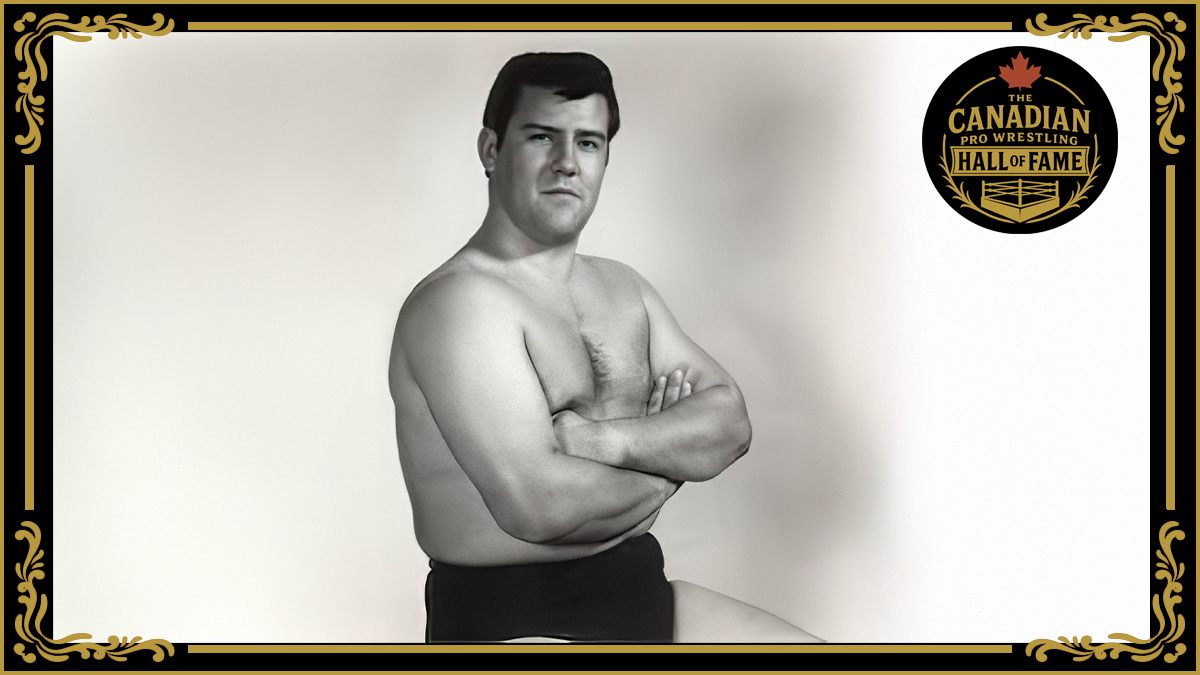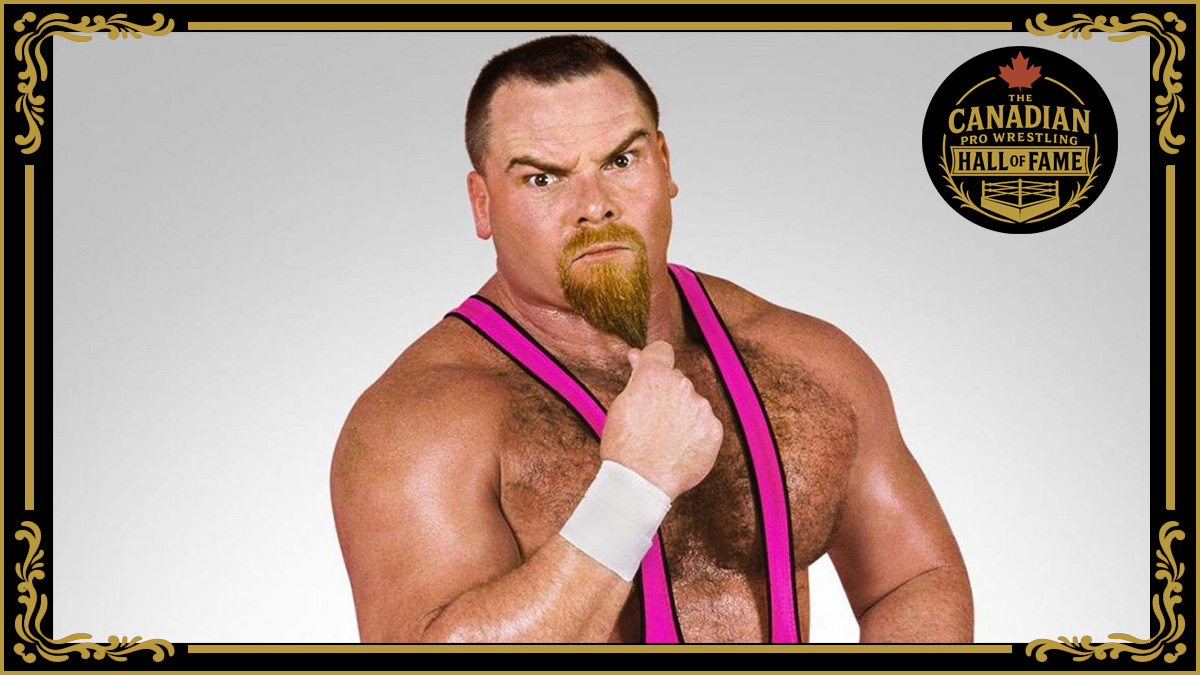Bobby Kay, one of the famed Cormier brothers of New Brunswick, finds it hard to believe that his wrestling career, which began more than 40 years ago, is still remembered. “I’ve been out of wrestling for 20, 21 years now. I’m just surprised that people are still talking about it. It’s amazing, I met some people the other day, when they found out who I was, they just went crazy.”
Kay will be making some appearances on a wrestling tour through the Maritimes, joining the likes of his brother Leo Burke, the Cuban Assassin and Lanny Poffo, from June 27 until July 9, starting in Spryfield, Nova Scotia. The expedition also includes stops throughout Nova Scotia, New Brunswick and Newfoundland and Labrador. He cannot make all the stops, however, said Kay, since he still has a job with the Loblaw Group of Companies, working in shipping and receiving.
Born Romeo Cormier to Edmond Cormier and the late Bernadette Doucette, into a family of 13 children, the 5-foot-9, 220-pounder was the youngest of the four brothers to become professional wrestlers.
“I sort of fell in love with it through my brothers. I was the youngest one to start,” Kay told SLAM! Wrestling. “Rudy and The Beast were all over the States doing their little thing, and I sort of got into it by watching them. Then Leo got into it, and he’s the one that dragged me around. When The Beast found out I was interested, I was only about 17 years old, he took me to Calgary. The old man, Stu Hart, took me under his wing and trained me. I refereed for a little while to get experience. I got into it from there.”
He made his debut in 1967. “First ten years were the best. I toured all over the world,” Kay said. “I was still young, so some of the heroes I used to watch when I was young were still in the business. Guys like Pat O’Connor, Lou Thesz, Buddy Rogers, they were still in the business then, so it was a big thing for me. One of my big highlights was when I went to Montreal and I wrestled a man I used to run from in the old stadium in Moncton, Wild Bull Curry. When I got in the ring with him, it reminded me of when he used to chase me all over the arenas.”
The name change from Romeo Cormier was a necessary one, he said. “If you’ve travelled all over the world, you know why I wouldn’t call myself Romeo! In the Maritmes, it’s pretty familiar, but everywhere else, they were weird.” The Bobby Kay name fit nicely with the moniker his brother Jean-Louis had adopted, based on Jean-Louis’ resemblance to an older wrestler, Rudy Kay.
A tag team specialist, Kay would win multiple International tag team titles, including runs with his brothers Leo Burke and The Beast as partners. He counts fellow tag specialists like Michel “Le Justice” Dubois and Freddie Sweetan among his favourite opponents. “They weren’t cartoons. They were real men, and they had a lot of respect for the wrestling.”
Though he wrestled everywhere from Calgary to Montreal to Charlotte to Kansas City, Kay would return home for the summers, where, from 1969-1976, Rudy spearheaded the NWA-affiliated Eastern Sports Association, which attracted top talent during the summer-only season for its short trips, beautiful scenery, friendly people and great seafood.
There was a definite pattern to the booking for the promotion, explained Leo Burke.
“See, when we had all those big guys, our season started in April to October, because the arenas weren’t heated and it was hockey time. So to start, we’d let the monster annihilate everybody he was wrestling with for the first four or five weeks. Then finally he’d work a program with Rudy; Rudy would put him over. Then he would go with Bobby. Then I was the third one at the end. So we’d work a three, four-week program. On interviews, ‘This guy doesn’t want to wrestle, he just wants to use a chair. I’ve got the answer.’ Then the Beast would come in and they’d draw more money,” said Burke.
The set-up worked, said Kay, using Archie “The Stomper” Gouldie as an example of a monster heel. “That was part of our promotion, I guess. That’s the difference between those days and today. In those days, you built up a guy, two guys would climb a ladder, and when they got to the top, they’d meet each other. The Beast would just beat everybody and Archie would beat everybody, and at the end, they’d face each other. That’s how it used to be done,” he said. “It made sense.”
It also made sense to Kay when he decided to step away from the business.
“I got out of it because I wanted to be with the family more,” he said. “I got married, had a couple of kids, so I wanted to stay around the house. I made the mistake of going into country music, and that took me out of the house more than the wrestling did!”
Fronting the Bobby Kay Band gave Kay a second shot at fame. “My first year in music, I drew a lot of wrestling fans. A lot of them liked the music we played, so they kept on coming,” Kay said. Today, as with the wrestling, people still know him for the music. “They still remember me from when I was in music.”
Kay is not one to look back on the past with much regret, but things didn’t always go as planned.
“There’s a lot of things I enjoyed, and a lot of things I’d like to forget,” he admitted.
The forays into promoting for Bobby Kay didn’t pan out. He and brother Leo Burke bought out their other brother Rudy in 1975, intending to take over Eastern Sports Association. But Rudy’s partner, Al Zinck, didn’t want to sell. He was the figurehead for the promotion, and Rudy didn’t let anyone know he was actually pulling the strings behind the scenes while also wrestling.
“When we had Al Zinck and Rudy, Rudy was still wrestling. He didn’t want anybody to know he was the promoter to begin with, so Al Zinck was there,” told Burke. “It never crossed my mind that [ATV television honcho] Joe Irving didn’t know that either. This was in October we bought Rudy out. Then by the time I got an answer from Irving, I got a letter in fact, in February or March, and our scene opens in April, saying, ‘I’ve been dealing with Al Zinck for X number of years. I’ve had nothing but success. I see no reason not to give him the license.’ So automatically, I had no TV. Al Zinck brought in his own crew. I think George ‘Crybaby’ Cannon brought some talent. They ran maybe five weeks and it folded. When they folded, instead of Irving calling me, he called Emile Dupre, saying, ‘If you want the TV, it’s yours.’ That’s how Grand Prix took over the Maritimes. We tried to run, but with no TV, you’re toast. That’s the truth. That’s what happened there.”
In the mid-1980s, Kay tried promoting again. Bad timing. “It would have been alright, but it was right at the same time that the WWF came out. The only interest they had was to kill everybody. They weren’t interested in taking over the Maritimes, they just didn’t want anybody else to run, I guess,” Kay said. “I got screwed by the Boxing & Wrestling Commission. They had promised me that if I ran that nobody else would get a license. I was running the Halifax Forum and WWF was running the Metro Centre. You can’t compete with that. Another thing, we promoted the Jean Levesque Arena in Moncton. They gave them a license to run the Coliseum. The city saw money and money talks, even though they promised they wouldn’t give anybody else a license.”
Now 59, Bobby Kay can look back on his dual careers. “I just wish I’d invested my money a little more. I did make good money, but when you’re young, you don’t think of tomorrow. But I don’t have no regrets. I enjoyed my life. I still enjoy my life.”




